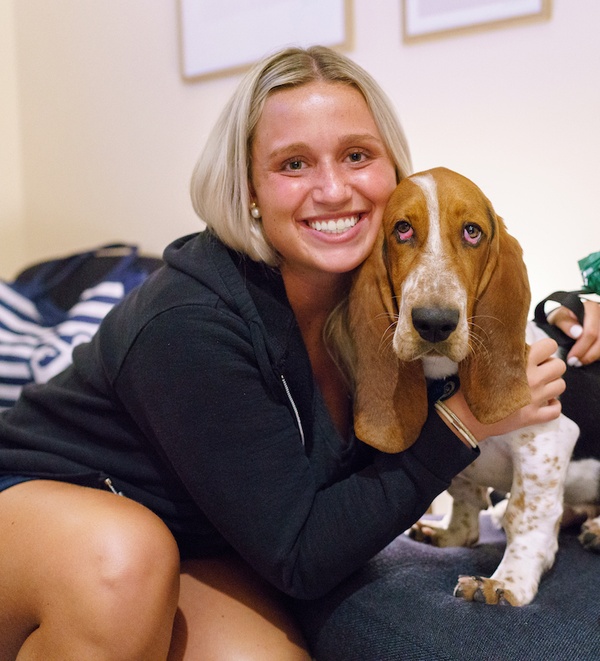
What Is Ectropion in Dogs & Cats?
With ectropion, a pet’s eyelid rolls outward — rather than rolling in toward the eye, like with entropion. This gives a pet a very droopy-eyed appearance, where you can usually see the pink on the inside of their eyelids.
While not inherently painful like entropion, ectropion comes with its own set of potential complications.
Since the eyelids don’t sit against the eyes like they should, the eyes can get dried out. Also, the droopy eyelid pockets can collect dust, pollen, or other small irritants. All of this can cause eye infections, irritation, or even scratches/ulcerations or scars on the eyes that interfere with vision.
Ectropion typically just affects the lower eyelids, and it can happen in one or both eyes.
What are the causes of ectropion?
Ectropion is a genetic or hereditary condition. It may also happen secondary to another issue, such as facial paralysis, a thyroid imbalance, or an injury, but this is less common.
Ectropion is seen most often in dog breeds with short noses and skin folds on their face. Commonly affected dogs include Basset Hounds, Bloodhounds, Boxers, Cocker Spaniels, Bulldogs, Saint Bernards, Great Danes, Labrador Retrievers, Shih Tzus, Mastiffs, Chow Chows, Newfoundlands, and others.
The condition is rare in cats.
What are signs your pet may have ectropion?
Ectropion by itself doesn’t irritate the eye. But the condition results in less effective eye protection and tear distribution.
Symptoms you may notice include red, itchy, or watery eyes, squinting, mucoid discharge from the eyes, conjunctivitis, or pawing at the eye area.
How is ectropion diagnosed?
In most cases, your vet can diagnose ectropion simply by looking at your dog’s eyes and eyelids.
Your vet may recommend additional tests to look for complications of ectropion, such as infections, corneal ulcerations, or chronic dry eye. These complications will need medical treatment.
SEE ALSO: Entropion in Dogs & Cats
What is the surgery for ectropion?
Many dogs with ectropion simply live with the condition. Some are affected by complications more frequently than others. Those dogs may need regular lubricating eye drops to prevent the conjunctiva from drying out.
For more severe cases of ectropion, surgery may be the best option, since it’s the only way to permanently fix the issue.
The surgical procedure involves shortening the lower eyelid to prevent drooping and gaping, so the lid “fits” better against the eyeball.
Can you prevent ectropion?
If adopting a puppy from a breeder, you can ask about their family history, including severe ectropion (which required surgical correction) or other eye issues. Choosing a puppy without a family history of ectropion is the best way to avoid the condition.
Even then, there’s no guarantee — especially for breeds listed above, that are naturally selected to have droopy eyes.
To prevent ectropion secondary to another medical condition, the best thing you can do is to keep up with regular veterinary care and seek prompt treatment for any infections or eye issues.